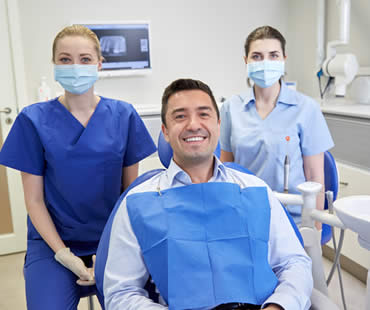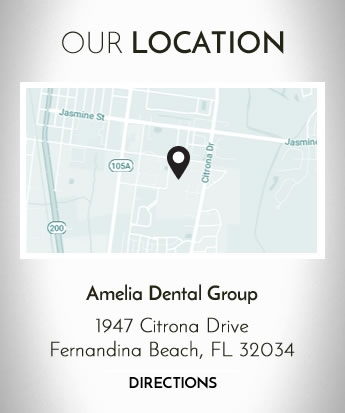
A tooth that has been damaged by decay or trauma may need endodontic treatment, also called root canal therapy, in order to save the tooth. Although it may sound like a scary procedure, advances in dentistry have made it a much less painful or upsetting process than it used to be. This treatment is worth it to restore your smile as naturally as possible.
How do you know you might need endodontics? You may experience pain in the tooth, sensitivity to hot or cold foods or beverages, or swelling in the area. Severe cases may have a discharge of pus near the tooth. However, not all cases of a badly damaged tooth result in noticeable symptoms. That’s one reason it’s important to maintain regular checkups with your dentist, who will pick up on problems with a tooth that you may not realize is damaged. Examination and testing such as X-rays can help diagnose a tooth that is in dire need of repair.
When possible, dentists strive to save your real tooth. Sometimes the best way to do that is through root canal therapy, which involves removing the damaged tooth pulp from the interior of the tooth. Using local anesthesia to make you comfortable, the dentist or endodontist uses special tools to enter the root canal, remove the pulp, and clean the area thoroughly. Once the tooth is ready, a crown is usually placed on top of the existing tooth to protect it from future damage and to complete the process. Sometimes antibiotics are prescribed if an infection was present to help ensure that you are in the best of health.
Endodontic treatment is often compared by patients to simply getting a regular tooth filling. The procedure is usually completed in one office visit and it won’t be long before you are back to your normal routine, with a fully restored natural tooth in your smile.
If you live in the Fernandina Beach area contact us today

Cosmetic dentistry offers many types of procedures, from porcelain veneers to teeth whitening or bleaching. Whether you are doing something more involved, like a restorative dental bridge and crown treatment, or something more straightforward, such as veneers, you should know what lies in store for you as you pursue your smile goals.
You should begin by talking to your cosmetic dentist. This is the time for you to be honest with your dentist about any changes you’d like to see in your smile. Don’t be embarrassed to discuss your true feelings; your cosmetic dentist is here to help you achieve your dream smile. If you are healthy overall, virtually nothing can stand in the way of you and your ideal look if you are in the hands of a skilled cosmetic dentist.
If you are getting your teeth whitened or are receiving veneers, you will need to clean your teeth beforehand. Removing the plaque and bacteria from the surface of the tooth is extremely important toward achieving even whitening results. Veneers that trap bacteria beneath them are perfect environments for infection. Having a thorough cleaning ensures that your veneers will be properly bonded to the tooth surface and you can enjoy your new look with confidence.
Many cosmetic dentistry therapies are achieved through some kind of oral surgery. In order to have the best possible experience, follow all of the instructions given to you by your surgeon. Make arrangements for someone to take you home following surgery, as you will not be able to drive safely. Have your medications ready and begin taking them as soon as recommended. Eat only foods recommended by your surgeon as your mouth heals.
Braces also require a full check-up and thorough cleaning. After the braces are applied or following any adjustments, your mouth may be sore. Have ibuprofen on hand to help with the swelling and specialized orthodontic wax to protect your sensitive soft tissues.
Talk to your cosmetic dentist about your procedure to see what recommendations are best for you and your treatment.
If you live in the Fernandina Beach area contact us today

Having a hole in your smile is not only embarrassing or unsightly, it also impacts the function of your mouth. It’s much easier to eat and speak with a full set of teeth. In the past, dentures or bridges were the go-to solutions for missing teeth. Not anymore! Dental implants provide a secure and permanent way to restore your smile.
A dental implant is a titanium rod that creates an artificial tooth root in the location that yours is missing. It is surgically implanted into your jaw so that as it heals, it fuses with your jawbone and becomes a permanent part of your body. Once the area has healed, an artificial tooth is placed on top of the titanium rod to give you back a fully functional and attractive tooth.
Dental implants offer many advantages to patients:
- Permanent
- No impact to neighboring teeth
- Attractive and natural
- Feels like a real tooth
- Secure
- Prevents migration of teeth
Implants are installed using local anesthesia, so you will not experience pain during the procedure. Minor swelling may occur afterwards, and any pain can usually be treated with over-the-counter products. Risks are low with dental implants, and long-term results are successful in most cases. Good oral care is important in maintaining your implants, but is no different than your regular brushing and flossing routine. Regular checkups with your dentist will help ensure that your implant remains in your smile forever.
If you live in the Fernandina Beach area contact us today

Traditional dentistry focuses on maintaining your oral health and treating any diseases you might have, while cosmetic dentistry is all about the way your smile looks. The goal of cosmetic dentists is to help you achieve the smile you’ve always wanted. It is becoming an increasingly popular area of dentistry because so many people want to look their best, and one of the utmost ways to do that is to have a beautiful smile.
There are numerous treatments and procedures available in cosmetic dentistry today. Here are some of the most popular ways that patients seek to transform their smiles:
- Teeth whitening, sometimes referred to as bleaching, relieves stains and discolorations that are affecting your teeth. It is a simple and quick process when performed by your cosmetic dentist, often taking only an hour out of your day. The results are usually amazing, making your teeth many shades whiter and eliminating embarrassing stains.
- Dental veneers cover up all kinds of smile imperfections. Problems like chips, cracks, discoloration, misalignment and more can be hidden under veneers. These thin porcelain shells are customized only for you, and are cemented directly onto the fronts of your teeth. A small amount of your tooth enamel must be removed in preparing your teeth, so veneers are a permanent solution for transforming your smile.
- Dental implants are a great solution for replacing missing teeth. Instead of going through the hassles associated with dentures or bridges, implants are a permanent restoration that becomes part of your body. A titanium rod is surgically placed into your jaw bone so that it fuses with the bone as it heals, and then an artificial tooth is placed on top. Implants are a secure and attractive way to restore your smile.
- Crowns, also called caps, are customized for every patient to fit over an existing tooth that has been severely damaged. They are often used to correctly shape broken, chipped or uneven teeth. Made of porcelain or acrylic with metal, crowns are strong and able to withstand biting forces that other restorations might not tolerate well.
Our dental office is located in Fernandina Beach

Many types of cosmetic dentistry procedures such as crowns, bridges, tooth implants, or other invasive procedures require some kind of anesthesia in order to be performed in comfort for the patient. Even a procedure like porcelain dental veneers can be aided by the addition of some kind of sedation dentistry, especially if the patient is experiencing anxiety or fear regarding the treatment. For any patient seeking a more relaxed cosmetic dental experience, sedation dentistry presents several options.
Inhaled sedation, or nitrous oxide, is more commonly known as “laughing gas.” It is inhaled via a mask and is controlled by your dentist. It is a light sedation, and allows you to remain completely responsive and compliant to instruction. Nitrous oxide sedation wears off quickly; because of this, you may be able to drive yourself home after your treatment.
Conscious oral sedation reduces your anxiety while still allowing for responsiveness to requests and directions. Oral sedatives are typically prescribed in pill form, and can be taken up to an hour before your dental procedure. Some dentists believe that taking a mild oral sedative the night before treatment can alleviate anxiety and ensure proper rest. You should not drive yourself home if you have taken an oral sedative for your dental treatment. You will not be fully alert.
IV sedation is also known as “sleep dentistry.” It provides the most relaxed dental experience, allowing you to be deeply sedated while never completely unconscious. A natural effect of the drugs is full or partial memory loss of the time during its use, so you may have no memories of your procedure. You should never drive following IV sedation, and you may not be fully alert for several hours. Plan to go home, rest, and sleep.
Your cosmetic dentist wants you to be comfortable throughout your dental therapy and will know which sedation dentistry option is right for your particular cosmetic dentistry procedure. Talk to your cosmetic dentist today about any concerns you have regarding your treatment so that you may have the most positive, pain and anxiety-free experience possible.
Our dental office is located in Fernandina Beach

Most people will eventually lose one or more teeth. Even with vigilant oral care, accident or injury can cause the loss of a tooth. As we age, simple daily wear can cause damage to your teeth resulting in tooth loss. More commonly, periodontal disease or tooth decay will cause you to lose one or more teeth.
While you may think one missing tooth, especially one that does not actually show, is not a problem, most dentists recommend immediately replacing a missing tooth. Missing teeth are not only unappealing aesthetically, but also cause problems with your bite and speech. More critically, missing teeth can cause a chain reaction that results in more missing teeth. Because teeth shift to fill the space created by the missing tooth, those teeth become loose and may eventually fall out.
Another problem caused by missing teeth is jaw bone loss. The pressure of tooth roots into the bone cells keeps them from dissolving. If the root is missing, the bone cells die and the bone disintegrates. The loss of jaw bone results in facial collapse, giving you a caved in and much older appearance. Bone loss also causes remaining teeth to become loose and fall out.
One of the best options for replacing lost teeth are dental implants. The placement of dental implants and tooth restorations can prevent the bone loss that results from missing teeth. Not only do dental implants restore the look of your natural teeth, they also provide the function and feel of your original teeth. Dental implants allow you to return to eating and speaking normally, and return your smile to its natural glory. To find out if dental implants are a viable solution to your missing teeth, contact your dentist for an examination and evaluation. With dental implants you can restore the look, feel and function of your natural smile.
Schedule your appointment at our Fernandina Beach dental office







